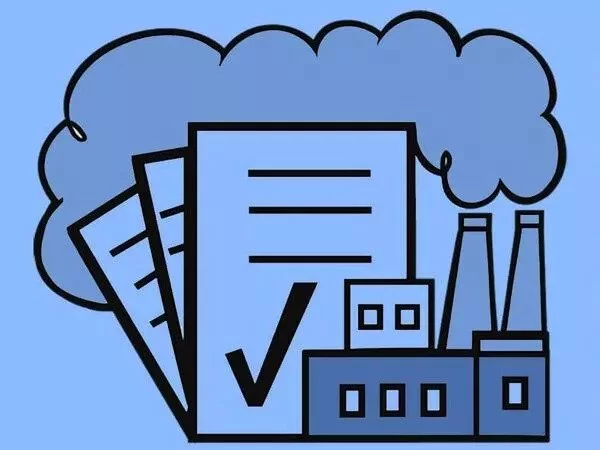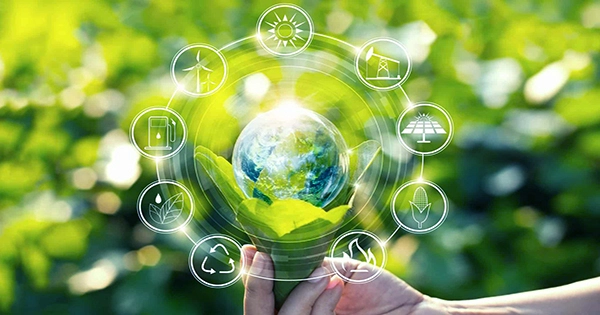Carbon removal, also known as negative emissions, is the process of removing carbon dioxide from the atmosphere and storing it in a long-term manner. It is an essential part of efforts to combat climate change and meet global climate goals, such as limiting warming to below 1.5°C above pre-industrial levels.
Researchers estimate that 10 gigatonnes of carbon dioxide must be removed from the Earth’s atmosphere and oceans each year to keep global warming to 1.5 degrees Celsius. It will be critical to have a diverse set of carbon dioxide removal methods.
Diversification lowers risk. That’s the gist of one key finding from a new study led by researchers at the Department of Energy’s Pacific Northwest National Laboratory. To effectively limit global warming to 1.5 degrees Celsius by the end of the century, a combination of carbon-capture-and-storage technologies will be required.
The authors warn that relying too heavily on a single carbon removal method may put the environment at risk. And we’ll probably need them all to remove the required amount of CO2 – 10 gigatonnes per year – to limit warming to 1.5 degrees Celsius by 2100.
The new study, which was published today in the journal Nature Climate Change, examines the carbon-removal capabilities of six different methods. They range from the reforestation of deforested areas to the application of crushed rock across landscapes, a technique known as enhanced weathering.
This study emphasizes the importance of continuing research on carbon dioxide removal methods and their potential impacts. While each approach has its own set of advantages and disadvantages, a diverse portfolio of carbon dioxide removal strategies is required to effectively address climate change.
Haewon McJeon
This is the first study to attempt to incorporate all carbon dioxide removal approaches recognized in US legislation into a single integrated model that predicts how their interactions will play out on a global scale. It does so while demonstrating how those methods could influence factors such as water use, energy demand, and cropland availability.
The authors investigate the potential of these carbon removal methods by simulating decarbonization scenarios, which are hypothetical futures that show what kinds of interactions might occur if the technologies were deployed under different conditions. They investigate scenarios in which no climate policy is implemented, for example (and warming rises to 3.5 degrees as a result).
A second pathway demonstrates what amount of carbon would need to be removed using the technologies under an ambitious policy in which carbon emissions are constrained to decline to net-zero by mid-century and net-negative by late-century to limit end-of-century warming to below 1.5 degrees.

The third scenario follows the same emissions trajectory as the first but includes behavioral and technological changes such as reduced material consumption and rapid electrification. In this scenario, these societal changes result in fewer overall emissions, which helps reduce the amount of residual greenhouse gas emissions that would need to be offset with carbon removal in order to meet the 1.5-degree target.
To meet that target – the original goal of the Paris Agreement – the authors estimate that approximately 10 gigatonnes of CO2 must be removed per year. Even if countries increased their efforts to reduce carbon dioxide emissions from all sources, the amount would remain the same.
“Bringing us back down to 1.5 degrees by the end of the century will require a balanced approach,” said lead author PNNL scientist Jay Fuhrman, whose work stems from the Joint Global Change Research Institute. “If one of these technologies fails to materialize or scale up, we don’t want too many eggs in that basket. If we use a globally diverse portfolio of carbon removal strategies, we can mitigate risk while mitigating emissions.”
Some of the technologies have the potential to contribute significantly, with the ability to remove several gigatonnes of CO2 per year. Others provide less but still have a significant impact. Enhanced weathering, for example, could remove up to four gigatonnes of CO2 per year by the mid-century.
Finely ground rock spread over cropland converts atmospheric carbon dioxide into carbonate minerals on the ground in this method. It is one of the most cost-effective methods discovered in the study.
In comparison, direct ocean capture with carbon storage, which involves removing carbon dioxide from seawater and storing it in the Earth’s subsurface, would likely remove much less carbon. According to the authors, the nascent technology is prohibitively expensive on its own. Combining this method with desalination plants in areas with high demand for desalinated water, on the other hand, could drive down costs while delivering more meaningful carbon reductions.
In addition to the removal methods mentioned above, biochar, direct air capture with carbon storage, and bioenergy combined with carbon capture and storage are being researched. Each of the modeled technologies has its own set of benefits, costs, and consequences. Many of these factors are region-specific. The authors use Sub-Saharan Africa as an example, where biochar, enhanced weathering, and bioenergy with carbon capture and storage have the potential to significantly reduce greenhouse gas emissions.
However, the authors believe that much more work is needed to address greenhouse gases other than carbon dioxide, such as methane and nitrous oxide. Many of these non-CO2 gases are several times more potent than carbon dioxide while also being more difficult to target.
While some of the removal methods examined in the new paper have received extensive research, their interactions with other, newer methods are less well understood. The research is the result of a collaboration between PNNL and the University of Maryland in which researchers investigate interactions between human, energy, and environmental systems.
Their work focuses on projecting what tradeoffs may flow from a range of possible decarbonization scenarios. The authors seek to better understand how these methods interact so that policymakers may be informed in their efforts to decarbonize.
“This study emphasizes the importance of continuing research on carbon dioxide removal methods and their potential impacts,” said corresponding author and PNNL scientist Haewon McJeon. “While each approach has its own set of advantages and disadvantages, a diverse portfolio of carbon dioxide removal strategies is required to effectively address climate change. We can develop a more comprehensive and effective strategy for reducing greenhouse gas emissions and limiting global warming by better understanding the potential impacts of each approach.”
















